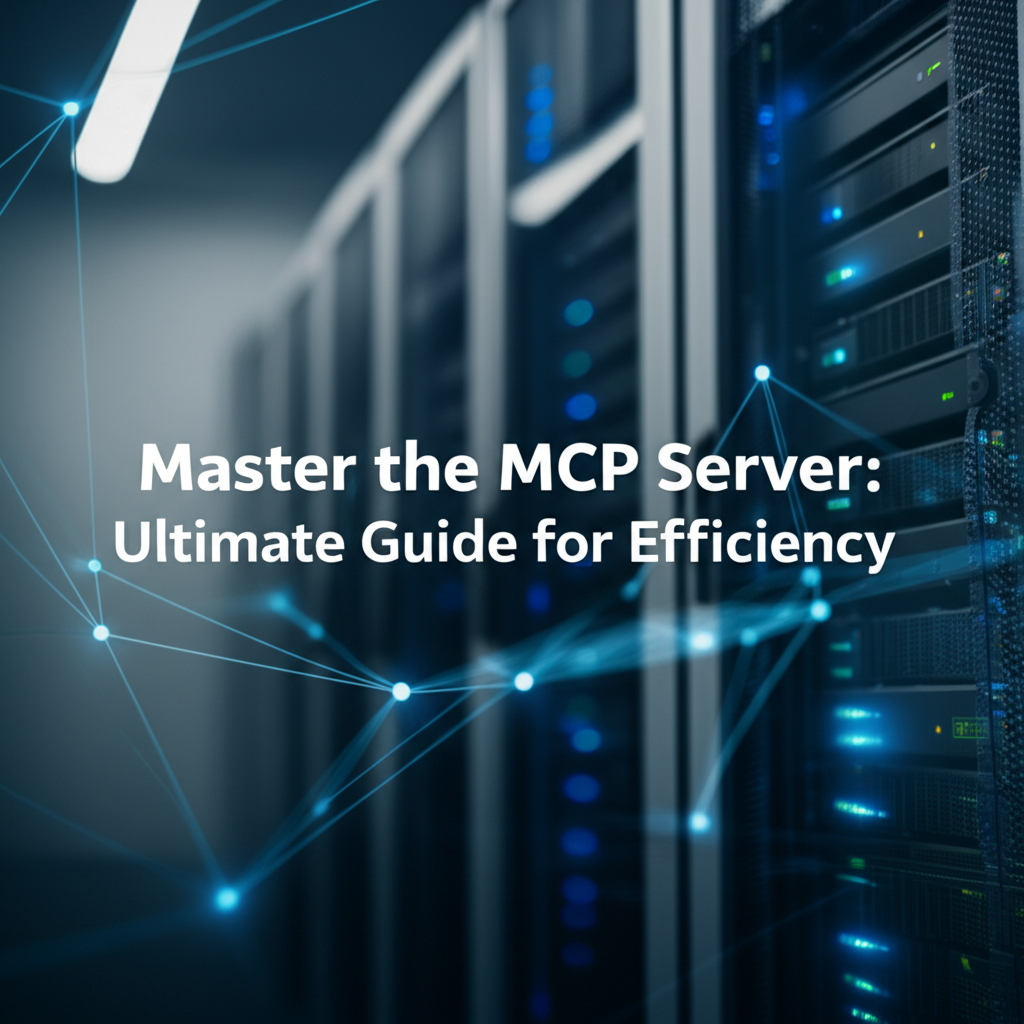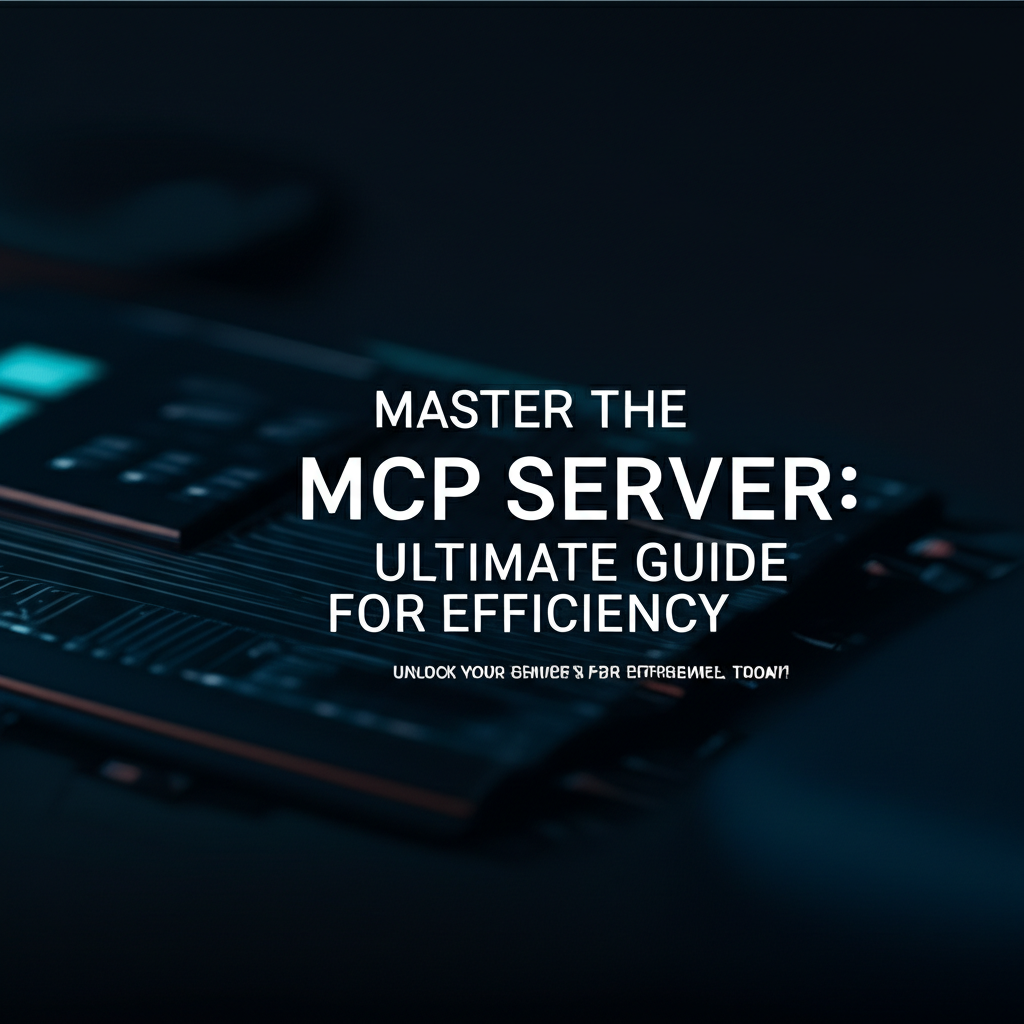Master the MCP Server: Ultimate Guide for Efficiency

Build AI Agents With Incredible MCP
Introduction
In the rapidly evolving landscape of artificial intelligence, the Model Context Protocol (MCP) has emerged as a pivotal framework for enabling seamless communication between AI agents and diverse data sources. The MCP server, at the heart of this protocol, serves as the conduit through which AI agents can access and process vast amounts of data with unparalleled efficiency. This comprehensive guide delves into the intricacies of the MCP server, offering insights into its architecture, functionalities, and the best practices for optimizing its performance. By the end of this article, you will be equipped with the knowledge to master the MCP server and harness its full potential.
Understanding MCP and MCP Server
What is MCP?
The Model Context Protocol (MCP) is a standardized protocol designed to facilitate the integration of AI agents with various data sources and tools. It serves as a bridge that allows AI agents to interact with real-world data, enabling them to make more informed decisions and perform complex tasks with greater efficiency.
The Role of MCP Server
The MCP server is the central component of the MCP framework. It acts as the intermediary between AI agents and the data sources, managing the retrieval, processing, and delivery of data. Its primary functions include:
- Data Aggregation: The MCP server aggregates data from multiple sources, ensuring a unified and comprehensive dataset for AI agents.
- Data Processing: It processes the aggregated data, applying necessary transformations and optimizations to make it suitable for AI agents.
- Data Delivery: The server delivers the processed data to AI agents, ensuring timely and efficient access.
Architecture of MCP Server
Components of MCP Server
The MCP server is composed of several key components, each playing a crucial role in its operation:
- Data Source Connector: This component connects to various data sources, retrieving data in the required format.
- Data Processor: The data processor applies transformations and optimizations to the retrieved data, preparing it for AI agents.
- API Gateway: The API gateway serves as the entry point for AI agents, facilitating secure and efficient data access.
- Data Store: The data store is a repository for the aggregated and processed data, ensuring quick and reliable access.
Server Deployment
The deployment of the MCP server can vary based on the specific requirements of the environment. Common deployment options include:
- Cloud-Based Deployment: This option offers scalability and flexibility, allowing for easy adjustments based on demand.
- On-Premises Deployment: Suitable for organizations with specific security and compliance requirements.
- Hybrid Deployment: Combining both cloud and on-premises solutions to leverage the benefits of both environments.
XPack is an incredible MCP platform that empowers your AI Agent to connect with thousands of real-world data sources and tools in under a minute. Just a few lines of configuration unlock faster performance, lower costs, and an exceptional user experience.Try XPack now! 👇👇👇
Optimizing MCP Server Performance
Performance Metrics
To optimize the performance of the MCP server, it is essential to monitor key performance metrics, including:
- Latency: The time taken to retrieve and process data.
- Throughput: The amount of data processed per unit of time.
- Availability: The server's uptime and reliability.
Best Practices
To enhance the performance of the MCP server, consider the following best practices:
- Load Balancing: Distribute the workload across multiple servers to prevent overloading.
- Caching: Implement caching mechanisms to reduce the need for repeated data retrieval.
- Scalability: Design the server to handle increased loads without degradation in performance.
Case Studies
Case Study 1: Enhancing Customer Support with MCP
A leading e-commerce company implemented the MCP server to improve its customer support system. By integrating the server with various customer data sources, the company was able to provide AI agents with real-time customer information, enabling them to offer personalized and efficient support.
Case Study 2: Streamlining Inventory Management
A retail chain utilized the MCP server to streamline its inventory management process. By aggregating and processing data from multiple sources, the company's AI agents could predict inventory levels and optimize stock orders, leading to reduced costs and improved efficiency.
Data Security and Compliance
Ensuring Data Security
Data security is a critical concern when dealing with sensitive information. To ensure data security, the MCP server should incorporate the following measures:
- Encryption: Encrypt data in transit and at rest to prevent unauthorized access.
- Authentication: Implement robust authentication mechanisms to control access to the server.
- Auditing: Regularly audit the server to detect and respond to potential security breaches.
Compliance with Regulations
The MCP server must comply with relevant data protection regulations, such as GDPR and CCPA. This involves:
- Data Minimization: Collect only the data necessary for the intended purpose.
- Data Retention Policies: Implement policies for the retention and deletion of data.
- Transparency: Ensure transparency in data handling and processing.
Conclusion
The MCP server is a powerful tool for enabling efficient and secure data access for AI agents. By understanding its architecture, optimizing its performance, and ensuring data security and compliance, organizations can harness the full potential of the MCP server to drive innovation and efficiency. As AI continues to evolve, the MCP server will play an increasingly important role in the future of data-driven decision-making.
FAQ
Q1: What is the primary function of the MCP server?
A1: The MCP server acts as the intermediary between AI agents and data sources, managing the retrieval, processing, and delivery of data.
Q2: How can I optimize the performance of the MCP server?
A2: To optimize the performance of the MCP server, consider implementing load balancing, caching, and ensuring scalability. Monitor key performance metrics such as latency, throughput, and availability.
Q3: What are the key components of the MCP server?
A3: The key components of the MCP server include the data source connector, data processor, API gateway, and data store.
Q4: How can the MCP server enhance customer support?
A4: By integrating with various customer data sources, the MCP server can provide AI agents with real-time customer information, enabling them to offer personalized and efficient support.
Q5: What measures should be taken to ensure data security and compliance with regulations?
A5: To ensure data security, implement encryption, authentication, and auditing. For compliance with regulations, follow data minimization, retention policies, and maintain transparency in data handling and processing.
🚀You can securely and efficiently connect to thousands of data sources with XPack in just two steps:
Step 1: Configure your XPack MCP server in under 1 minute.
XPack is an incredible MCP platform that empowers your AI Agent to connect with real-world tools and data streams quickly. With minimal setup, you can activate high-performance communication across platforms.
Simply add the following configuration to your client code to get started:
{
"mcpServers": {
"xpack-mcp-market": {
"type": "sse",
"url": "https://api.xpack.ai/v1/mcp?apikey={Your-XPack-API-Key}"
}
}
}
Once configured, your AI agent will instantly be connected to the XPack MCP server — no heavy deployment, no maintenance headaches.

Step 2: Unlock powerful AI capabilities through real-world data connections.
Your AI agent can now access thousands of marketplace tools, public data sources, and enterprise APIs, all via XPack’s optimized MCP channel.

